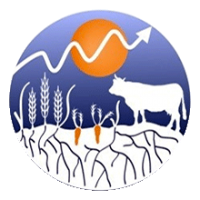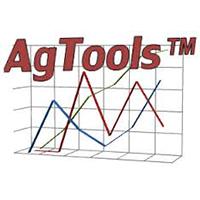Integrating Environmental Accounting into AgTools
The AgToolsTM software uses a suite of programs to evaluate the profitability and feasibility at the individual farm level of different management decisions and cropping systems. Integrating environmental accounting into AgToolsTM aims to take into consideration the economic and environmental impacts of agricultural practices at the farm level. The intention is to encourage practices that reduce greenhouse gas emissions and discourage practices that degrade the environment. The long-term goal of this project is to implement an AgToolsTM module that allows agricultural producers to see their environmental impact on society and the sustainability of their farm operation while analyzing the economic trade-offs. This module will be called AgEnvironmentTM.
To properly integrate environmental effects of agriculture on climate change and farm-level sustainability, we researched the most significant variables: energy use, pesticide and fertilizer use, soil erosion, water usage, and greenhouse gas emissions. We found a greenhouse gas calculator, a universal soil loss equation, and the Environmental Impact Quotient for pesticides to incorporate intoAgEnvironmentTM. These tools, among others, will allow farmers to see their environmental footprint against economic trade-offs of their operation as they attempt to reduce the severity of future climate change.
As farmers strive to be sustainable and environmentally friendly, one option is to change to direct seed instead of conventional tillage to decrease soil erosion and increase carbon sequestration capabilities of their soil. We did an AgToolsTM analysis to compare direct seed and conservation tillage winter wheat-summer fallow rotation over ten years in the less than twelve inch precipitation zone in the mid-Columbia Region of Oregon. The total net returns and the net present value were higher for direct seed due to reduced equipment, labor, and fuel costs. This is important to farmers, because they want to see the economic advantage of changing to practices that are better for the environment in order to justify a business decision.
We also compared between climate change and crop rotations (Table 1). Our case study farm of 3,800 acres, assembled by Professor Clark Seavert, consisted of either a winter wheat and summer fallow rotation against annual cropping with winter wheat, camelina, canola, and peas. It is located in the 12-18 inch precipitation zone in the Mid-Columbia region of Oregon. For the winter wheat and summer fallow rotation without climate change, actual wheat yields from Umatilla County were obtained from the OSU-OAIN database for 2003 to 2012. These annual yields were randomized by year and used to estimate future production for years 2014 to 2023, assuming past wheat yields will occur in the future. The camelina, canola, and peas budgets have varying yields and varying prices for net returns to represent production and market sensitivity analysis.
For the scenario with climate change, projected wheat yields for 2014-2023 in Umatilla County were added to the winter wheat budgets. The projected wheat yields for Umatilla County are from the RCP 4.5 Global Climate Change Models (GCM), Regional Concentration Pathways 4.5 and 8.5 (GFDL-ESM2M (GCM 7)). Fertilizer costs were increased by 20 percent, costs for insecticides and fungicides were added, and the number of sprayer applications increased in the wheat budgets to represent the effect of climate change. Camelina, canola, and pea yields were increased 20 percent as well as fertilizer costs. The tables below show the results of a winter wheat-summer fallow rotation (referred to as “base operation”) compared to annual cropping with winter wheat, camelina, canola, and peas with and without climate change.
Annual cropping with winter wheat, camelina, canola, and peas with climate change has the highest cash flow, net farm income, and accumulative net farm income in year ten (Tables 1 and 2). Annual cropping with winter wheat, camelina, canola, and peas is more profitable than winter wheat and summer fallow with and without climate change.
Table 1. Cash Flow by Crop Alternative, With and Without Climate Change | ||||
Year | Base Operation | Annual Cropping | Base Operation | Annual Cropping |
Without Climate Change | With Climate Change | |||
1 | $747,138 | $1,275,889 | $454,845 | $1,070,799 |
2 | $693,901 | $802,341 | $520,231 | $828,056 |
3 | $252,501 | $716,784 | $414,353 | $1,200,864 |
4 | $356,193 | $425,079 | $602,986 | $785,631 |
5 | $448,142 | $694,176 | $353,298 | $872,313 |
6 | $518,966 | $632,043 | $499,968 | $837,239 |
7 | $407,105 | $848,317 | $325,685 | $1,036,785 |
8 | $613,867 | $570,204 | $489,540 | $654,034 |
9 | $70,092 | $517,482 | $328,016 | $1,101,045 |
10 | $26,905 | $141,477 | $444,718 | $603,551 |
If the effects of climate change are less intense, for producers it would be better to switch to annual cropping with winter wheat, camelina, canola, and peas than staying with winter wheat and summer fallow. This crop rotation had two out of four fields growing winter wheat every year, or 1,800 acres of winter wheat. This scenario was set up so farmers can use this tool to analyze crop rotations as they adapt to climate change. This shows that climate change has advantages to farmers and if they are aware of these advantages, they can plan crop rotations accordingly. As far as policy implications for climate change, AgEnvironmentTM has the potential to be used as a tool that analyzes economic impacts for farmers when they adapt to meet proposed climate change regulations.
Table 2. Accumulative Net Farm Incomes by Crop Alternative, With and Without Climate Change | |||||
Year | Base Operation | Annual Cropping | Base Operation | Annual Cropping | |
Without Climate Change | With Climate Change | ||||
1 | $637,596 | $345,303 | $1,132,003 | $926,912 | |
2 | $1,223,228 | $757,265 | $1,769,221 | $1,589,845 | |
3 | $1,369,008 | $1,064,897 | $2,318,826 | $2,623,531 | |
4 | $1,617,041 | $1,559,722 | $2,579,045 | $3,244,301 | |
5 | $1,958,106 | $1,805,944 | $3,117,153 | $3,960,545 | |
6 | $2,369,082 | $2,197,921 | $3,588,771 | $4,637,359 | |
7 | $2,661,540 | $2,408,959 | $4,274,336 | $5,511,392 | |
8 | $3,161,348 | $2,784,440 | $4,686,576 | $6,007,462 | |
9 | $3,118,194 | $2,999,211 | $5,038,352 | $6,942,800 | |
10 | $3,032,582 | $3,331,412 | $5,014,827 | $7,381,349 | |
REACCH Undergraduate Summer Interns come from all over the country to spend 9 weeks with REACCH scientists conducting research, gaining job and graduate school training, and sharing their experiences. These blogs are the culmination of their research experience. Jenna Way is continuing her education at Oregon State University as a masters student. She presented a poster on this research at the Pacific Northwest Climate Science Conference in Seattle, September 2014.
Editor: Leigh Bernacchi

If you’re interested in climate and agriculture, continue reading articles at the blog aggregator, AgClimate.net


